LNP 15.6%
Incumbent MP
Warren Truss, since 1990.
Geography
Wide Bay covers parts of the Queensland coast, including the towns of Noosa, Gympie and Maryborough, at the southern end of central Queensland as well as the northern end of the Sunshine Coast.
History
Wide Bay is an original federation electorate. It has been held for most of its history by the Nationals and its predecessors, although there have been two periods where it was held by the ALP for over a decade.
The seat was first won in 1901 by Gympie colonial MP Andrew Fisher, a prominent Labor member. Fisher had served as a minister in Anderson Dawson’s brief government in 1899, the first socialist government in the world.
Fisher served as a minister in Chris Watson’s federal Labor government in 1904, and became deputy leader of the ALP in 1905. He became the ALP’s leader in 1907. In 1908, Alfred Deakin’s minority government fell, and Fisher became Prime Minister at the head of a Labor minority government. This lasted until 1909, when Deakin returned to power at the head of a new unified Liberal party.
Fisher returned to office after the 1910 election, when the ALP won an unprecedented majority in the House of Representatives. This was the first time a party won a majority in a federal election. He governed until 1913, when he lost office to the Liberal Party, but he returned to power after Joseph Cook called a double dissolution in 1914. Fisher resigned from Parliament in 1915.
The ensuing Wide Bay by-election was won by Liberal candidate Edward Corser by only 86 votes. Corser was re-elected as a Nationalist in 1917, 1919, 1922 and 1925, dying in July 1928.
The 1928 Wide Bay by-election was won by Corser’s son, Bernard Corser, who stood for the Country Party. He held the seat until his retirement in 1954.
The seat was won in 1954 by the Country Party’s William Brand, who had previously served as a senior member of the party in the Queensland state parliament. He was re-elected in 1955 before retiring in 1958.
Wide Bay was won in 1958 by Country candidate Henry Bandidt, but lost in 1961 to the ALP’s Brendan Hansen. Hansen held Wide Bay until his retirement in 1974, and was elected to the Queensland state parliament for the seat of Maryborough from 1977 until 1983.
Upon Hansen’s retirement in 1974, the Country Party’s Clarrie Millar won back Wide Bay, and he held it until his retirement in 1990.
Wide Bay was won in 1990 by the National Party’s Warren Truss. Truss was made a junior minister in the Howard government in 1997 and joined the cabinet in 1999. He was elected Deputy Leader of the Nationals in 2005, and became Leader after the defeat of the Howard government, when previous leader Mark Vaile moved to the backbench.
Candidates
- Warren Truss (Liberal National)
- Gordon Dale (Katter’s Australian Party)
- Joy Ringrose (Greens)
- Stephen Alfred Anderson (Palmer United Party)
- John Chapman (Family First)
- Grace Dickins (Rise Up Australia)
- Lucy Stanton (Labor)
Assessment
Wide Bay is a safe LNP seat.
2010 result
| Candidate | Party | Votes | % | Swing |
| Warren Truss | LNP | 47,977 | 58.86 | +10.25 |
| Nikolee Ansell | ALP | 19,645 | 24.10 | -6.87 |
| Jim McDonald | GRN | 8,967 | 11.00 | +2.96 |
| Ken Herschell | FF | 3,049 | 3.74 | +0.29 |
| Santo Ferraro | ON | 1,875 | 2.30 | +1.09 |
2010 two-candidate-preferred result
| Candidate | Party | Votes | % | Swing |
| Warren Truss | LNP | 53,484 | 65.61 | +7.22 |
| Nikolee Ansell | ALP | 28,029 | 34.39 | -7.22 |
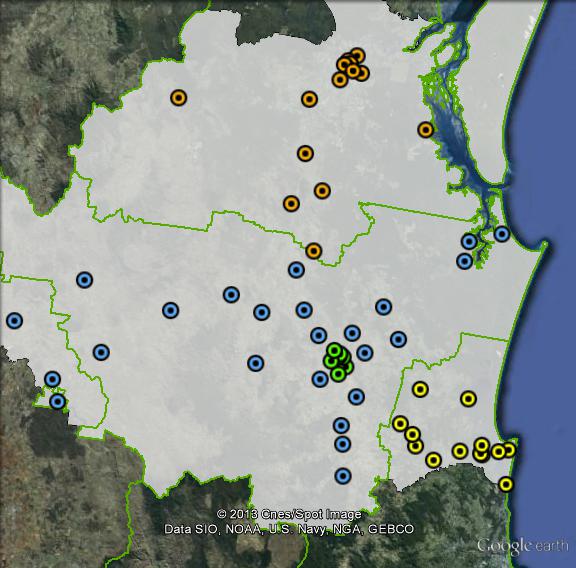
Booth breakdown
Booths have been divided into four areas. Polling places in Fraser Coast council area have been grouped as ‘Maryborough’ and those in the Sunshine Coast coucnil area have been grouped as ‘Noosa’. Those booths in the town of Gympie have been grouped together as Gympie Urban. The remainder of the Gympie council area have been grouped together with the small number of booths in the South Burnett and Cherbourg council areas as ‘Gympie Rural’.
The LNP won a majority in all four areas, ranging from 60.8% in Noosa to 70.7% in Gympie Rural. The Greens polled over 17% in Noosa, but less than 10% in the other three areas.
| Voter group | GRN % | LNP 2PP % | Total votes | % of votes |
| Noosa | 17.41 | 60.77 | 22,304 | 27.36 |
| Maryborough | 6.77 | 64.70 | 15,856 | 19.45 |
| Gympie Rural | 7.80 | 70.72 | 11,824 | 14.51 |
| Gympie Urban | 8.34 | 68.39 | 10,950 | 13.43 |
| Other votes | 10.57 | 67.16 | 20,579 | 25.25 |
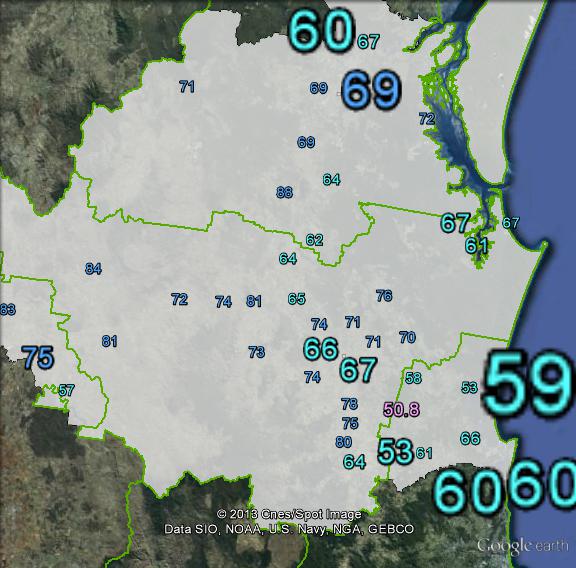
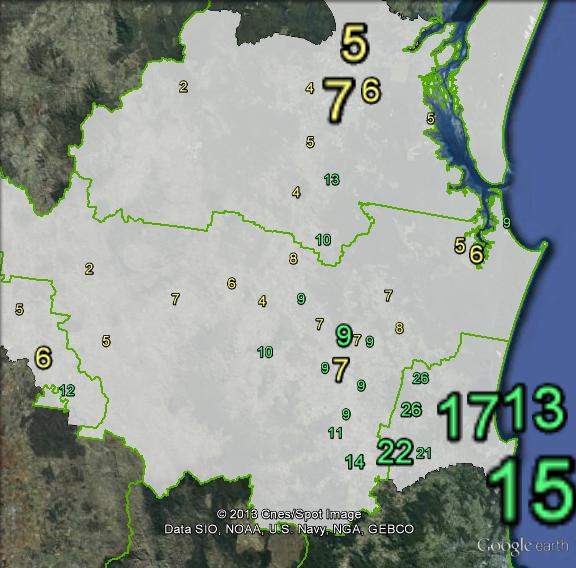
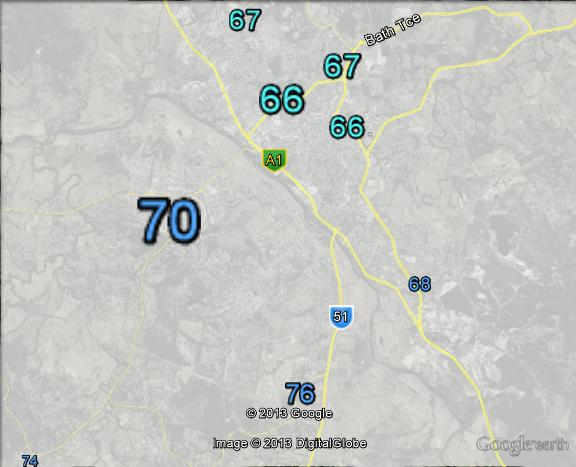
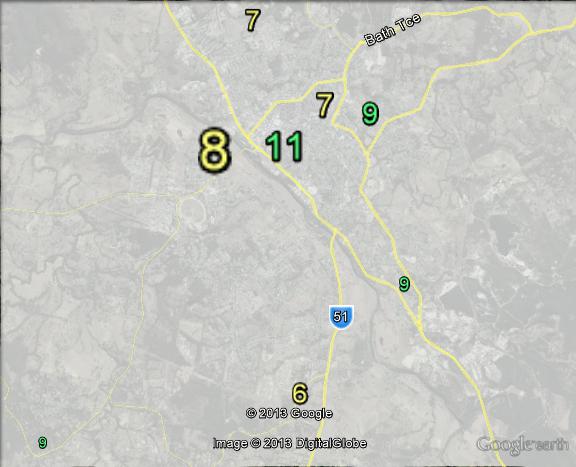
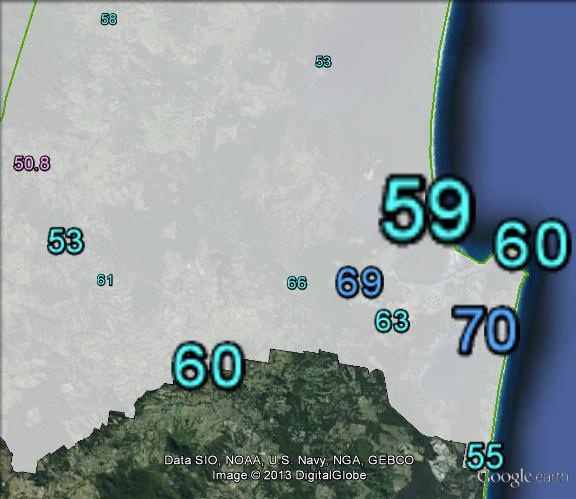
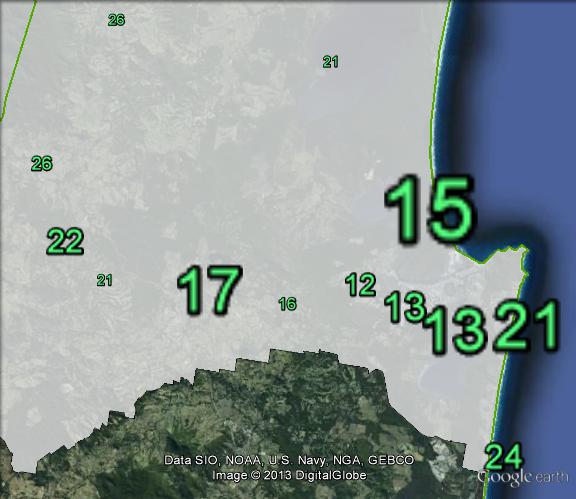
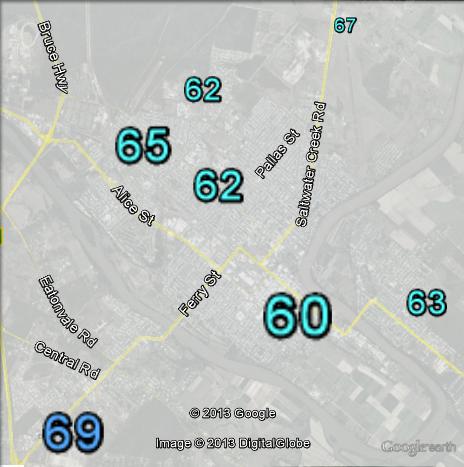
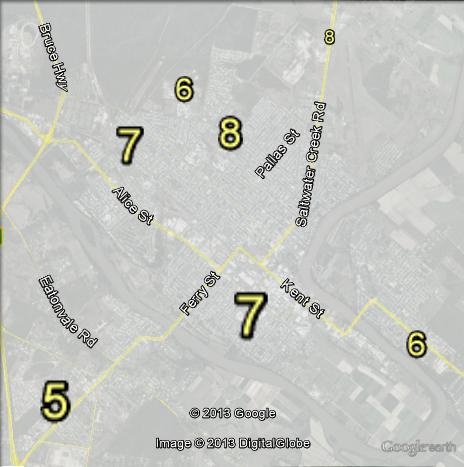


Expect the KAP to overtake Labor here.
I wouldn’t be shocked by that. It depends how much votes KAP takes off ALP as opposed to the LNP. Across the state KAP took it off the ALP and in Gympie the ALP (12% of the vote) ran third behind KAP (22% of the vote).
The real question mark is Maryborough. Chris Foley was a sitting independent and took 30% of the vote in the state election. The LNP had 35%, Katter 19%, ALP 11%. How much of the Foley vote splits to the LNP, KAP or the ALP in the Federal election is a huge question mark. It is difficult to know how much of Labor’s 2010 Federal vote was on Foley and how much on KAP. It is also difficult to know how much of Truss’ vote that went to Foley in the state election will stay on him Federally or will it shift to Katter.
You also need to consider the big Trade Union anti Newman government push in Maryborough. They had a huge meeting at the Brolga Theatre and the Fraser Coast Chronicle is running hard on it. So I think Labor could hold onto Federal 2010 votes in Maryborough and any KAP votes in Maryborough could come from the LNP.
Wide Bay is a huge question mark to me. How well the ALP vote holds up is hard to call. KAP may well run second, but then will it be enough to make Truss sweat a little? I doubt he can lose it though.
Michael Tudman is Palmer’s United Party candidate for Wide Bay.
http://www.frasercoastchronicle.com.au/news/mboros-michael-tudman-stands-clive-palmer-wide-bay/1884894/
This could be one of the Qld seats where we see some very interesting, widely divergent voting. Truss is not exactly the most dynamic candidate, esp given his position. Might drop a high few % here?
The Greens might actually hold their vote given the strength around Noosa and those professional urbanites that have moved to find rural serenity in some towns around the area. KAP will probably take votes from both parties but will it be more than the 8-10% range?. No idea how PUP will do?
I just have this thought that on election night we’ll see some surprising figures for all parties in this seat….
I’ve been thinking about Queensland’s next redistribution – there are several seats, including this one whose names are no longer relevant. Wide Bay for example, no longer touches Wide Bay. This seat has become more of a ‘Cooloola’ seat. Likewise, Herbert should be renamed to eliminate any confusion regarding the nearby Herbert River, which is not located within the seat.
Another issue I have is that many of the coastal cities (Bundaberg, Gladstone, Rockhampton, Mackay, Townsville) seem to be becoming partially split into seats which are based around another major city. It would be good to redistribute some of these seats to focus on one main city. This may include the redistribution of vast inland areas to compensate for changes. For example:
Hinkler is based around Bundaberg, but areas just north of the city are in Flynn
Flynn is a Gladstone-based seat, but includes areas around North Bundaberg which should be part of Hinkler and areas on the outskirts of Rockhampton
Capricornia includes the city of Rockhampton, but some areas on the outskirts of that city are not included, while there are areas on the outskirts of Mackay which are.
Dawson is primarily a Mackay/Whitsunday seat, but includes suburbs of Townsville.
Good post Macca. I think you will find some significant changes due to population growth in the major coastal centres.
Hinkler will soon struggle to contain the growth in Hervey Bay and Bundaberg – I think it has to be split.
Personally I think Wide Bay should shift to include Hervey Bay and Maryborough together. Hinkler would then take in the area north of Hinkler including Miriam Vale, Agnes Water, Rosedale as well as the North Burnett Shire Council on Gayndah, Monto, Eidsvold, Biggenden etc.
Flynn and Capricornia would have a flow on effect, but not major changes as Flynn only loses lightly populated areas to Hinkler. It would enable Capricornia to take some of the southern section of Dawson – which is a good thing. All those seats along the coast would become more focused on their main cities.
What happens to Gympie – whether it shifts into Fairfax or Maranoa I am unsure? Maybe it makes sense to include it with Nambour, Kingaroy, Goomeri and even take Esk and that rural area off Blair?
Noosa is a question mark.
I think Longman would start shifting north which would mean redrawing it and the two Sunshine Coast seats.
I think it all depends on where they add the next seat. If it’s added to the north of Brisbane, I think you’ll see Longman, Fisher and Fairfax all shifting north, forcing Wide Bay toward Hervey Bay, Hinkler taking back North Bundaberg, etc. The problem I see is Flynn. Capricornia and Dawson need to move south – to remove southern Townsville from Dawson and south Rockhampton / Gracemere from Flynn. This, combined with Hinkler moving north would force Flynn west – where they’d have to take a much greater area with less population.
My preferred solution is a new seat between Cairns and Townsville, which would allow Townsville to be split between two seats, pushing Dawson back to Mackay and taking parts of Capricornia, Capricornia taking back the Rockhampton and Central Highlands parts of Flynn, a new Gladstone-Bundaberg seat, a Hervey Bay-Maryborough-Gympie seat and Noosa pushed into a third Sunshine Coast seat.
But all this is a bit academic really because as Antony Green suggests in his blog post (http://blogs.abc.net.au/antonygreen/2013/05/prospects-for-federal-redistributions-in-the-2013-16-parliament.html), Queensland isn’t due for a redistribution until after the 2016 election and we’re 115,000 people short of gaining an additional seat.